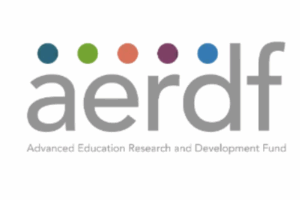Books, Courses & Certifications
Pioneering AI workflows at scale: A deep dive into Asana AI Studio and Amazon Q index collaboration

Organizations today face a critical challenge: managing an ever-increasing volume of tasks and information across multiple systems. Although traditional task management tools help organize work, they often fall short in delivering the intelligence needed for truly efficient operations.
Today, we’re excited to announce the integration of Asana AI Studio with Amazon Q index, bringing generative AI directly into your daily workflows. This dynamic combination helps teams work smarter by powering AI workflows at scale with data from everyday applications. The result is seamless automation for key use cases like project intake, campaign management, and product launches, transforming how teams work and deliver results.
In this post, we explore how Asana AI Studio and Amazon Q index transform enterprise efficiency through intelligent workflow automation and enhanced data accessibility. We start by examining the core capabilities of this powerful integration. Then we dive deep into the technical implementation and a step-by-step process of how to set up the Amazon Q Business data accessor and configure the Asana admin console. Throughout the post, we cover essential topics including security considerations, access controls, and best practices for maximizing the value of this integration.
Whether you’re looking to streamline operations, improve decision-making, or break down data silos, this comprehensive guide will show you how to harness the full potential of Asana AI Studio and Amazon Q index in your enterprise environment.
The power of integrating Asana AI Studio with Amazon Q index
Asana AI Studio represents a breakthrough in no-code automation, helping teams create and deploy AI-powered workflows that streamline operations and minimize routine busywork. As the leading work management service for human and AI coordination, Asana offers enterprise-grade solutions that break down traditional data silos and enhance collaboration through AI-driven automation and insights.
Amazon Q index for independent software vendors (ISVs) provides seamless integration of generative AI applications with enterprise data and metadata through an Amazon Q index, so you can search across your application data alongside other enterprise content. This integration capability makes sure ISVs can provide their customers with a unified search experience while maintaining strict security, access controls, and ownership over their data.
With the refined indexing of Amazon Q combined with Asana’s comprehensive work management data, organizations can transform how they harness the power of their data.
Through the Amazon Q Business data accessor capability, Asana can securely tap into and analyze information from diverse business applications, converting previously isolated data into meaningful business intelligence. This unlocks key use cases like project intake, campaign management, and product launches, all while maintaining data security.
The following video demonstrates this solution in action, as a team member uses Asana to quickly access project information, create automated workflows, and receive AI-powered recommendations for task optimization across connected services.
How the integration benefits enterprises
Organizations can transform scattered information into real business outcomes with the combined power of Asana AI Studio and Amazon Q index:
- Connect applications in minutes – Use cross-application data quickly and confidently with one-time setup and secure permissions
- Build integrated workflows – Design AI-powered workflows that unify teams and applications, with no code required
- Scale AI company-wide safely and securely – Access real-time data and insights where your teams already work while the system intelligently maintains strict security protocols and existing access control list (ACL) permissions to help keep sensitive information protected
Spencer Herrick, Principal AI Product Manager at Asana, shares:
“At Asana, we’re committed to helping teams move faster with clarity and confidence. Integrating Amazon Q index into our AI infrastructure is a powerful step forward—it allows us to unify knowledge scattered across enterprise systems and surface highly relevant insights directly in workflows. This not only accelerates decision-making but also improves the quality of execution across teams. AWS has been an exceptional partner throughout this process, and we’re thrilled by the early results and the opportunity to continue innovating on top of this foundation.”
Solution overview
The Amazon Q Business data accessor functions as a secure gateway, linking enterprise tools to the Amazon Q index. This component offers organizations a protected channel through which Asana AI Studio can retrieve information from their Amazon Q index. This enables Asana’s AI features to provide relevant answers to user queries by incorporating data from various connected systems.
The result is an AI-powered experience that combines Asana’s work management capabilities with your organization’s broader information landscape that uses enterprise data across multiple systems. When a user asks a question through smart chat or triggers an AI Studio workflow, Asana’s AI orchestrator processes the query, checking both Asana’s native data for relevant information as well as the Amazon Q Business data accessor to search the Amazon Q index, hosted across the customer’s AWS environment. The index can aggregate data from various enterprise systems such as Google Workspace, Microsoft 365, and Salesforce using built-in Amazon Q Business connectors. The orchestrator then uses generative AI to provide users with contextual, actionable insights directly within the Asana system. With this integration, teams can quickly access project documentation, communication history, and other critical information, enhancing productivity and decision-making efficiency across the aspects of work management.
The following diagram illustrates the overall solution integrating Asana AI Studio and Amazon Q index in the customer’s environment.
Prerequisites
To use the Amazon Q index integration with Asana’s AI features, you must have the following in place:
- An AWS account with the necessary permissions and service access
- An active Amazon Q Business setup, configured with AWS IAM Identity Center for user authentication
- Asana’s AI features enabled
- Super admin rights within your Asana workspace
The Amazon Q Business data accessor facilitates a smooth connection between Asana’s AI tools and your Amazon Q index. To implement this integration, you must perform some initial setup in both the Amazon Q Business environment and your Asana admin console. This typically involves configuring authentication methods, specifying which data sources to include, and setting appropriate access controls.
For a comprehensive guide on setting up Amazon Q Business, refer to Innovate on enterprise data with generative AI & Amazon Q Business application. For Asana-specific steps, you can find detailed instructions in the Asana Help Center for Amazon Q index, but we also cover key steps in this post.
Add Asana as a data accessor in Amazon Q Business
Complete the following steps to add Asana as an Amazon Q Business data accessor:
- On the Amazon Q Business console, choose Applications in the navigation pane.
- Open the application you want to add a data accessor to.
- Choose Data accessors in the navigation pane.

- Choose Add data accessor.
- For Data accessors, choose Asana.

- For External ID, enter the external ID provided to you by Asana.
In Asana, the tenant ID (or external ID) in the Amazon Q Business data accessor is called the domain ID. To retrieve the Asana domain ID, choose your account profile in Asana and choose Admin Console. Choose Settings, and scroll to Domain settings to retrieve the ID.
- Choose Create trusted token issuer.

- For Trusted token issuer name, enter the name of the trusted token issuer, then choose Create trusted token issuer.

- For Data source access, select Allow access to all data sources.
- For User access, select All users with application access, or select Define access based on user and groups for more granular access control.
- Choose Add data accessor.

After you add Asana as a data accessor successfully, a pop-up window will appear with data accessor configuration details. Share the data accessor configuration details with Asana, because it uses them to make a secure connection from the Asana AI Studio system through the Amazon Q index SearchRelevantContent API to retrieve content from your Amazon Q index.

Connect an Amazon Q index to the Asana admin console
Connecting an Amazon Q index to Asana requires super admin permission. Complete the following steps to connect:
- Log in to the Asana admin console
- Choose Settings, Asana AI, and Data connectors.
- Choose Link account.
- Fill in the required fields with information gathered from the Amazon Q Business console.
- Choose Verify connection.
After an Amazon Q index is connected to Asana, the option Data to use from connected apps will appear in the rule builder settings within AI Studio. You can now start running workflow rules with enriched context from third-party data sources like Google Drive, Microsoft Outlook, and Salesforce, as shown in the following screenshot.

You can also use Asana smart chat in your Asana workspace and start asking questions. While interacting, smart chat will automatically search for relevant information across Asana and the connected third-party data sources like Google Drive using Amazon Q index to provide you with instant answers, as shown in the following screenshot.

Clean up
When you’re done using this solution, clean up the resources you created:
- On your Asana admin page, navigate to Settings, Asana AI, Data connectors, and disconnect Amazon Q.

- On Amazon Q Business console, delete the Asana data accessor from the Data accessors page. Deleting this data accessor will delete permissions and access to the data accessor for users.
- Delete the Amazon Q Business application that you created as a prerequisite on the Applications page. Deleting the Amazon Q Business application will remove the associated index and data source connectors and avoid incurring additional costs.
Conclusion
This new Asana and Amazon Q index integration marks a significant advancement in intelligent work management. By merging Asana’s robust work management system with Amazon Q index’s comprehensive search capabilities, organizations can now effortlessly access and use information previously scattered across multiple systems. AI Studio users can craft more intelligent workflows by using external data through the new Data to use from connected apps option in the rule builder, and smart chat users can benefit from automatically cited responses that draw from both Asana and connected third-party sources. All of this is achieved while maintaining security and data ownership, effectively breaking down information silos that often hinder collaboration and efficiency.
Whether you’re aiming to increase efficiency, optimize workflows, or make more informed decisions, the Asana and Amazon Q index integration provides the necessary tools to transform how your organization works. We encourage you to explore the Amazon Q Business console and Asana’s AI features documentation to unlock the full potential of your connected workplace. By embracing this powerful integration, you’re not just improving your work management, you’re setting the stage for a more intelligent and efficient future for your team.
About the Authors
 Spencer Herrick is Principal AI Product Manager at Asana. He leads the development of AI-first products that help organizations seamlessly integrate new AI capabilities into collaborative work management. His journey into AI began not in Silicon Valley, but at the Large Hadron Collider in Switzerland, where he worked as an experimental physicist. Since then, Spencer has built and led innovative product teams at Grammarly, Uber, and Postmates, consistently pushing the boundaries of what’s possible at the intersection of AI, personalization, and user experience.
Spencer Herrick is Principal AI Product Manager at Asana. He leads the development of AI-first products that help organizations seamlessly integrate new AI capabilities into collaborative work management. His journey into AI began not in Silicon Valley, but at the Large Hadron Collider in Switzerland, where he worked as an experimental physicist. Since then, Spencer has built and led innovative product teams at Grammarly, Uber, and Postmates, consistently pushing the boundaries of what’s possible at the intersection of AI, personalization, and user experience.
 Sourabh Banerjee is a Senior WW GenAI specialist at AWS with over 10 years of experience in leading product and GTM strategy. Sourabh leads global strategy and execution for helping customers and partners unlock business productivity through Amazon Q Business across industries.
Sourabh Banerjee is a Senior WW GenAI specialist at AWS with over 10 years of experience in leading product and GTM strategy. Sourabh leads global strategy and execution for helping customers and partners unlock business productivity through Amazon Q Business across industries.
 Chinmayee Rane is a Generative AI Specialist Solutions Architect at AWS, with a core focus on generative AI. She helps ISVs accelerate the adoption of generative AI by designing scalable and impactful solutions. With a strong background in applied mathematics and machine learning, she specializes in intelligent document processing and AI-driven innovation. Outside of work, she enjoys salsa and bachata dancing.
Chinmayee Rane is a Generative AI Specialist Solutions Architect at AWS, with a core focus on generative AI. She helps ISVs accelerate the adoption of generative AI by designing scalable and impactful solutions. With a strong background in applied mathematics and machine learning, she specializes in intelligent document processing and AI-driven innovation. Outside of work, she enjoys salsa and bachata dancing.
 Bobby Williams is a Senior Solutions Architect at AWS. He has decades of experience designing, building, and supporting enterprise software solutions that scale globally. He works on solutions across industry verticals and horizontals and is driven to create a delightful experience for every customer.
Bobby Williams is a Senior Solutions Architect at AWS. He has decades of experience designing, building, and supporting enterprise software solutions that scale globally. He works on solutions across industry verticals and horizontals and is driven to create a delightful experience for every customer.
 Akhilesh Amara is a Software Development Engineer on the Amazon Q team based in Seattle, WA. He is contributing to the development and enhancement of intelligent and innovative AI tools.
Akhilesh Amara is a Software Development Engineer on the Amazon Q team based in Seattle, WA. He is contributing to the development and enhancement of intelligent and innovative AI tools.
 Chanki Nathani is a Sr. Partner Solutions Architect at AWS, focusing on business applications. With over 10 years of experience, he helps ISVs build and scale their SaaS solutions on AWS, specializing in serverless architectures and generative AI implementations. Chanki helps organizations use AWS AI/ML services, including Amazon Bedrock and Amazon Q Business, to transform their applications and enhance user experiences.
Chanki Nathani is a Sr. Partner Solutions Architect at AWS, focusing on business applications. With over 10 years of experience, he helps ISVs build and scale their SaaS solutions on AWS, specializing in serverless architectures and generative AI implementations. Chanki helps organizations use AWS AI/ML services, including Amazon Bedrock and Amazon Q Business, to transform their applications and enhance user experiences.
Books, Courses & Certifications
In a System That Wasn’t Built for Me, My Students Help Me Stay

Academia is a high-stress, high-surveillance environment. Faculty are asked to do more with less: more students, more reporting, more unpaid labor — and less time, less support, and less say in decisions that shape our work. For many of us, the job has become a constant negotiation between our values and institutional priorities.
And yet, I stay. Not for the salary. Not for the endless meetings or initiatives that depend on faculty labor but often move forward without our input. I stay because of my students. They are the reason I continue to show up.
At the California State University where I teach, my students come from a wide range of racial, cultural and economic backgrounds. Many are the first in their families to attend college. Few have had Black professors before. And I am one of very few Black faculty on campus.
It can be isolating. I attend meetings where no one else looks like me. I navigate policies that were not built with people like me in mind. Even well-intentioned efforts to foster belonging often feel top-down or disconnected from the everyday realities of teaching, mentoring and being visible.
But my students — across all backgrounds — support me in ways they may not even realize. It’s in the way they show up, engage with material, trust me with their stories, or quietly ask, “How are you doing?” They remind me: when Black professors are in the classroom, everyone benefits.
They understand that representation is about more than role models for Black students. It expands perspectives, deepens classroom trust, and allows for more honest, critical dialogue. Our presence in the academy challenges the status quo and makes space for voices that are too often ignored.
They are not my formal support system, but they are my community.
In a profession where recognition is rare and burnout is high, a thank-you note, a hallway chat, or a class conversation that sparks something real can carry me through weeks of feeling invisible in faculty spaces. My students remind me that this work — when stripped of the bureaucracy — still matters.
To be sure, students should never be expected to carry the emotional weight of supporting their professors. That is not their role. The gratitude I feel does not excuse the broader shortcomings of higher education. It simply underscores how powerful our relationships can be in the face of institutional neglect.
But universities must do more than celebrate diversity on their brochures. If they truly care about faculty success — especially for faculty of color — they need to listen to students. Students see us more than any task force or strategic plan. They witness our labor and our care firsthand.
Institutions should partner with students to co-create strategies for retaining faculty of color. That means going beyond traditional evaluations to foster real conversations about campus climate, mentorship and visibility. It means funding student-led efforts that recognize and uplift faculty who teach and build community — the very labor that fuels student success but often goes unrewarded.
Universities should also rethink what support looks like outside of formal structures. Sometimes what faculty need is not another committee, but a space to gather, breathe and feel seen. Student organizations often model this well. They create spaces that are joyful, inclusive and rooted in mutual care. Faculty can benefit from those spaces too — not as authority figures, but as participants in a shared community.
Creating sustainable change in higher education doesn’t require reinventing the wheel. It requires valuing the relationships already happening on campuses every day. When students trust their professors, when faculty show up with care, when conversations extend beyond grades and the syllabus — those are the moments that build true community.
Academia doesn’t always recognize our full contributions. And for those of us at the intersections of race, gender and class, it can be especially isolating. But my students remind me every day that I belong — not just because I teach, but because I matter. That, more than anything, is why I keep going.
This isn’t just about one professor’s experience. It’s a reminder to higher-ed leaders, policymakers and educators that student-faculty relationships are powerful levers for change. If we want to build inclusive, thriving campuses, we must center the people who are already doing the work of belonging — even when no one is watching.
Books, Courses & Certifications
5 Free Courses And Certificates To Put On Your Resume In 2025

A course or certificate, even if in progress and not completed yet, can make all the difference between getting hired for your dream job and being passed off for another candidate
getty
An estimated 97% of employers are currently using, or about to implement, skills-based hiring, according to Coursera’s latest report.
That’s a significant 20% leap from 2023, when skills-based hiring was increasingly becoming a buzzword in HR circles, with the U.S. Department of Labor releasing recommendations and a guidebook for skills-based hiring a year later.
5 Free Courses And Career Certificates To Include In Your Resume
Short online courses and certificates are some of the best ways to demonstrate your skills and suitability, not just for the job, but also for the company culture, especially if it thrives on a growth mindset.
Here are some free courses and certificates you can study today and add to your resume to boost your chances of being hired (and help you negotiate for higher pay too):
1. Free Social Media Marketing Certification Course: Get Certified In Social Media Strategy
- Free, by HubSpot Academy
- Perfect for small business owners, marketing managers, and content creators/freelancers
- Total completion time is five hours and 18 minutes
2. Data Landscape Of GenAI For Project Managers
- Free for PMI members, by PMI (Project Management Institute)
- Perfect if you’re already a project management professional
- Total course length is five hours
(You can find other free beginner-friendly Gen AI courses here in my recent article.)
3. Practical Application Of Generative AI For Project Managers
- Free, by PMI
- Suitable for new and existing project management professionals
- Total course length is five hours
4. IBM: Data Analytics Basics For Everyone Free Course
- Free if you select the audit option, on edX
- Perfect for beginners
- You can gain a certificate, but only if you take the paid option; otherwise you can complete this for free
- Takes approximately five weeks at three hours a week to complete
5. Getting Started With Python for Data Science, by Codeacademy
- Free course by Codecademy
- Includes three hands-on projects to flex your skills and demonstrate your knowledge
- Is suitable for beginners
Is A Career Certificate Worth It?
Here are some other reasons why studying a course or career certificate is absolutely essential if you’re seeking to land a promotion, salary premium, high-paying client projects, or get hired faster:
- About 96% of the 1,000 employers surveyed for the report indicate that a job candidate having a course or certificate on their resume strengthens their application and boosts their chances of being hired, up from 88% two years ago.
- In the U.S. and Canada, 90% of employers say they’d offer a higher starting salary to candidates who’ve completed certificates and short courses.
- Nearly a third of entry-level professionals who studied a course or certificate in the past year secured a salary raise.
- An estimated 21% earned a promotion as a direct result of studying courses and certificates
(These stats are taken from Coursera’s Microcredentials Report 2025.)
I know from first-hand experience that studying an online course makes it easier to get hired faster.
In 2022, I was interviewed for a project management role that was a stretch outside of my comfort zone.
When it came time for the dreaded but much-anticipated interview question, “Tell us about one of your weaknesses,” I took this as an opportunity to relate one of my “weak” areas in project management, but then anchored my answer by sharing that I was currently studying the Google Career Certificate in Project Management (at the time this was free due to financial aid offered on Coursera).
I was hired that same day.
My manager later confided to me that even though I had less experiences than other candidates, this very detail (the course I was studying) was the deciding factor that made her take a bet on me and hire me for the job, because I had proven that I had a growth mindset and clearly had freshly updated skills that could be put to use in the role.
So yes, free online courses with certificates are absolutely worth it.
Where Can I Find Free Online Courses And Certificates?
Choose one free online course or certification from the list above, or find another one that’s more relevant to your career goals. You can find free online courses with certificates (and without certificates) from platforms like:
- LinkedIn Learning (free to Premium members)
- Codecademy
- Great Learning
- Alison
- edX
- IBM SkillsBuild
- Microsoft Learn
- HubSpot
And many more are just a tap away.
Once you’ve started, be consistent. Block out some time every week to study and practice, and share what you’re learning on LinkedIn. You can also add your course or certificate to your resume and include a progress note, like “currently studying,” or “due to complete by October 2025.” This is a positive sign to employers that you’re actively building yourself professionally, and it encourages them to invite you for interviews and offer you job and promotion opportunities.
About 97% of employers are adopting skills-based hiring, which means certificates are in greater demand than degrees
getty
You’re just a few weeks away from changing your entire career and income trajectory.
Books, Courses & Certifications
Get AI Certified With edX
edX is again offering a discount of up to 30% on selected courses and program bundles until September 10th. Since AI is currently the hot topic we look at what is on offer.
Disclosure: When you make a purchase having followed a link to from this article, we may earn an affiliate commission.
Billed as the Top AI Program on edX, the Oxford Artificial Intelligence Programme is offered through the University of Oxford’s Saïd Business School. The current session started on August 6th and is open to late registrations until August 11th.
Offered in its Executive Education category, and thus and is included in the offer, the program is designed to provide a comprehensive understanding of AI for a diverse professional audience and there are no prerequisites. It consists of a welcome orientation module followed by six weekly modules that are released sequentially. Each module is estimated to take 7–10 hours per week. The curriculum covers a range of topics, from foundational concepts to real-world business applications and ethical considerations.
-
Module 1: Artificial Intelligence Ecosystem – Explores the history of AI and its place within the broader digital ecosystem.
-
Module 2: AI and Machine Learning – Delves into the mechanics of machine learning, including supervised, unsupervised, and reinforcement learning.
-
Module 3: Deep Learning and Neural Networks – Understands the function of deep learning and neural networks.
-
Module 4: Working with Intelligent Machines – Examines the impact of AI on the workforce and the concept of machine intelligence.
-
Module 5: The Ethics of Artificial Intelligence – Discusses the ethical, legal, and regulatory aspects of AI.
-
Module 6: How to Drive AI in Your Business – Focuses on identifying business opportunities for AI and building a business case for its implementation.
Upon successful completion, participants are expected to be able to:
-
Evaluate the potential impact of AI on their industry and develop a business case for its adoption.
-
Establish a framework for critically analyzing the social and ethical implications of AI.
-
Gain a conceptual understanding of machine learning, deep learning, and neural networks.
-
Receive a certificate of attendance from the Saïd Business School, University of Oxford.
-
Join the official Oxford Executive Education Alumni group on LinkedIn.
As already mentioned this programme is for business professionals. If you are a professional developer IBM now has a new microcredential, IBM:AI Developer starting on October 15th but still in the offer as long as you register by September 10th.
The six-week course consists of a welcome orientation module followed by six weekly modules estimated to take 10-12 hours per week:
- Module 1: Introduction to AI, GenAI, and Prompt Engineering
- Module 2: Introduction to Web Development
- Module 3: Using Python for Data Science
- Module 4: Python Fundamentals and Data
- Module 5: Python Coding Practices and Web Application Development
- Module 6: Capstone Project: Develop AI Applications Using Python
Over six weeks, participants will learn the building blocks of AI development while honing real-world job-ready skills that include:
- Using Python, HTML, CSS, and JavaScript for web and software development
- Applying Python programming fundamentals to collect data and drive business solutions
- Creating and deploying web applications using Flask
- Building generative AI applications using Python
Assessment is continuous and based on a series of practical assignments completed online.
The existing IBM Applied AI Developer Professional Certificate, comprising 7 courses over 6 months and the Generative AI Engineering Professional Certificate also from IBM and comprising 16 courses over 13 months, both of which are described in AI At edX With 30% Savings are also encompassed by the offer as long as you enroll in the full programs without any other discounts.
And of course edX Professional Certificates that we’ve previously explored in Brand New Data Science Courses on edX, Gain A Python Professional Certificate From edX and other articles are also part of the edX Back to School offer that runs until September 10, with the code SKILLSEDX25.
-

 Events & Conferences3 months ago
Events & Conferences3 months agoJourney to 1000 models: Scaling Instagram’s recommendation system
-

 Funding & Business1 month ago
Funding & Business1 month agoKayak and Expedia race to build AI travel agents that turn social posts into itineraries
-

 Jobs & Careers1 month ago
Jobs & Careers1 month agoMumbai-based Perplexity Alternative Has 60k+ Users Without Funding
-

 Education1 month ago
Education1 month agoVEX Robotics launches AI-powered classroom robotics system
-

 Education1 month ago
Education1 month agoAERDF highlights the latest PreK-12 discoveries and inventions
-

 Mergers & Acquisitions1 month ago
Mergers & Acquisitions1 month agoDonald Trump suggests US government review subsidies to Elon Musk’s companies
-

 Jobs & Careers1 month ago
Jobs & Careers1 month agoAstrophel Aerospace Raises ₹6.84 Crore to Build Reusable Launch Vehicle
-

 Podcasts & Talks1 month ago
Podcasts & Talks1 month agoHappy 4th of July! 🎆 Made with Veo 3 in Gemini
-

 Podcasts & Talks1 month ago
Podcasts & Talks1 month agoOpenAI 🤝 @teamganassi
-

 Jobs & Careers1 month ago
Jobs & Careers1 month agoTelangana Launches TGDeX—India’s First State‑Led AI Public Infrastructure

